Dates 27 May 1944 – 22 Jun 1944 | Result Allied victory | |
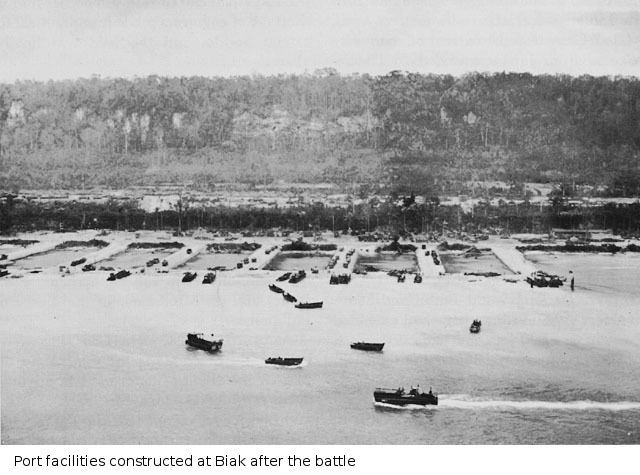 | ||
474 killed,2428 wounded, 3500 casualties due to bush typhus ~6,100 killedunknown wounded~450 captured Combatants United States of America, Japan, Empire of Japan Similar New Guinea campaign, Battle of Morotai, Operations Reckless and Pers, Battle of Noemfoor, Battle of Wakde | ||
The battle of biak
The Battle of Biak was part of the New Guinea campaign of World War II, fought between the United States Army and the Japanese Army from 27 May to 17 August 1944. It was part of General Douglas MacArthur's Southwest Pacific command's offensive drive to clear New Guinea in preparation for an invasion of the Philippines. It was the first major effort by the Japanese to allow uncontested landings for the purpose of creating a kill zone inland.
Contents
- The battle of biak
- Ww2 battle of biak pacific war images ww2 batalla de la guerra del pac fico im genes de biak
- Background
- Battle
- Aftermath
- References
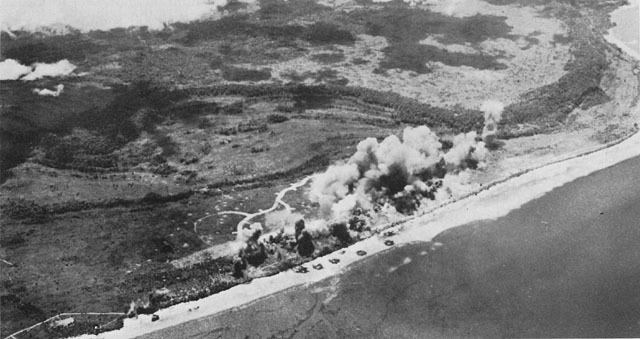
Ww2 battle of biak pacific war images ww2 batalla de la guerra del pac fico im genes de biak
Background
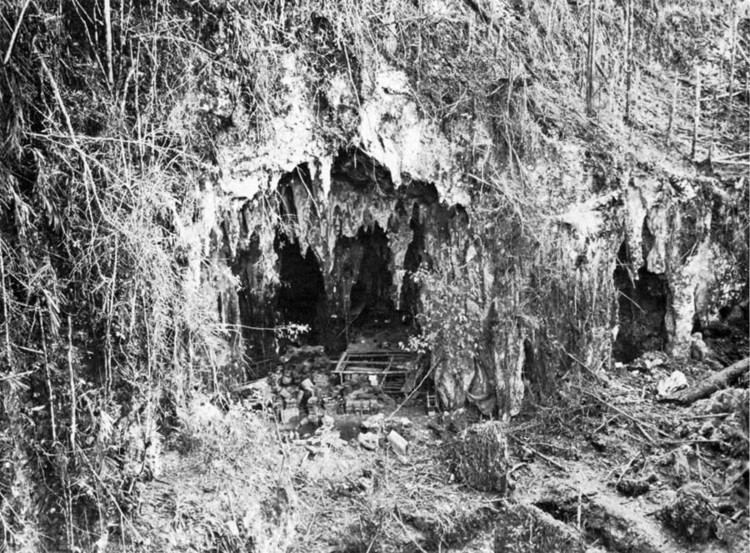
The island of Biak dominates the entrance to Geelvink Bay, near the western end of New Guinea. The island was held by 11,000 Japanese troops under the command of Colonel Kuzume Naoyuki. Disdainful of the doctrine of defence at the water's edge, he decided instead to allow the Americans to come ashore unopposed so that they would stroll unwarily into the trap he had prepared for them. This would turn the area around the vital airfield there into a martial honeycomb of caves and pillboxes filled with riflemen, automatic weapons, artillery, batteries of mortars, and a single company of nine Type 95 Ha-Go light tanks. Kuzume also stockpiled these positions with enough ammunition, food and water to sustain his defense for months. Water was less than abundant on Biak, where heat and humidity would take a toll equal to enemy gunfire.
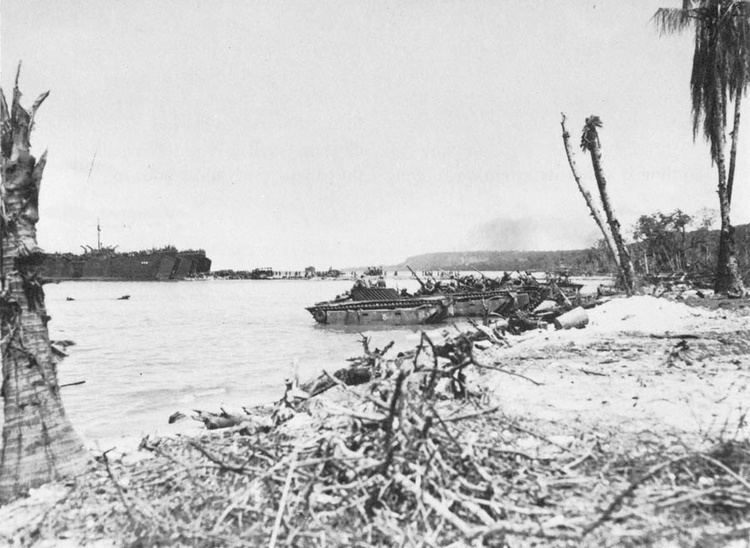
It was known from an intercepted message dated 5 May 1944 that the IJA 2nd Area intelligence thought that next Allied landing would probably be on Biak, and a preliminary landing was made on 17 May at Wakde on the way to Biak. There a smaller airfield was available, which could be used as an advanced base until the Biak strips were ready. While initial G2 estimates of enemy troops was approximately 5000, an intercepted message at the end of April gave the ration strength as 10,800, though it was thought this was a figure based upon projected, rather than, current strength.
Battle
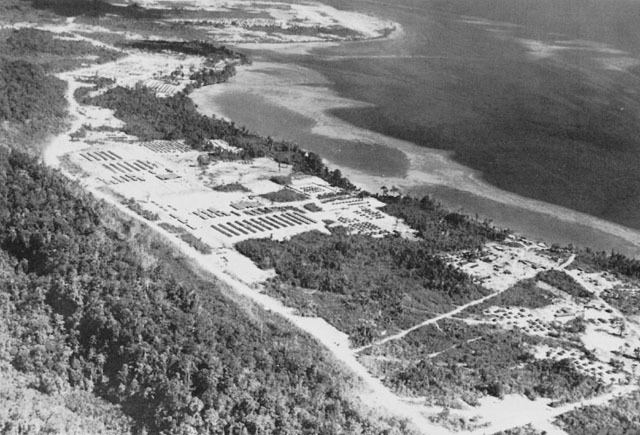
The 41st Infantry Division (Sunset) of the United States Army landed on Biak on 27 May 1944, initially with the 162nd Infantry Regiment, and soon followed by the remainder of the division. By 5:15 in the afternoon 12,000 troops had landed, with 12 M4 Sherman tanks, 29 field guns, 500 vehicles and 2400 tons of supplies.
After a brief attack on the beachhead by a group of Japanese light tanks, defeated by a group of M4 Shermans, the regiment moved inland quietly confident and expecting little opposition. This perception all changed when they reached the airfield, where from out of low-lying terrain and the ridges above came a terrible storm of heavy weapons fire that pinned them to the ground. It was not until dark that amphibious tractors could be brought up to extricate them from the trap. The next day they reached the end of Mokmer airstrip. Sorido airstrip was the objective. The Japanese held firm, delaying the capture of Mokmer airstrip. With the slow progress the US command pulled their forces back, relieved Major General Horace Fuller of command of the 41st Division and reinforced the division with the 34th Regimental Combat Team (34th RCT) of the 24th Infantry Division.
General Robert L. Eichelberger assumed command of the Hurricane Task Force on 15 June. The new attack plan was to drive the Japanese from all terrain upon which they could fire on Mokmer Drome. First the West Caves, the Japanese encampment area, was cleared by the 186th Infantry Regiment, who then moved up on the ridges. The 34th RCT, supported by the 167th Field Artillery Battalion occupied Borokoe and Sorido Dromes almost without opposition. On 5 June the 186th Infantry, with the 2nd Battalion of the 162nd Infantry attached moved to the eastern bases of the ridges dominating Mokmer strip. A coordinated attack was launched on 7 June which resulted in the capture of Mokmer strip and the establishment of a beachhead south of the strip.
The US forces had been delayed 10 days. With the delay, the Fifth Air Force Command looked for alternative sites from which they could operate. They arranged the capture of the nearby island of Owi on 2 June and built Owi Airfield comprising two 7,000-ft airstrips there. An advanced echelon was stationed there composed of a bombardment group, two fighter groups, a P-61 Black Widow night fighter group, and a garrison of 15,000 troops.
Control of Biak nearly became a critical turning point battle in the campaign for the Pacific. The Japanese had been seeking to engage the Americans in a decisive battle, the Kantai Kessen, that would enable them to win the war. Biak was not far from major Japanese fleet units and there were a number of land airfields near by that could support the land based aircraft the Japanese were hoping to concentrate to defeat the US fleet. The Imperial Navy's Chief of Staff, Admiral Ryūnosuke Kusaka, believed Biak represented the Allies' main effort, and a counterattack at Biak could provoke the US Navy into engaging in a major action. Admiral Toyoda, commander of the Japanese Mobile Fleet, initially attempted to reinforce Biak to hold the airstrips, but his first reinforcement sent 1 June was turned back when a Japanese scout plane mistakenly reported a US aircraft carrier in the vicinity. A second relief effort on 8 June was intercepted and driven off by American and Australian naval forces. A third attempt, with the support of the super-battleships Yamato and Musashi was scheduled for 13 June, but the American invasion of the Marianas forced the Imperial Navy to redirect their forces to the Marianas for a major confrontation in the Philippine Sea.
No. 1 Wireless Unit RAAF, an Australian radio transmission intercept and monitoring unit, learned that at the time of the invasion Lieutenant General Takuzo Numata, the Chief of Staff of the 2nd Area Army, was on the island for an inspection tour. He sent messages to command requesting to be evacuated. A float plane was sent in from Korim Bay on the night of 20 June to bring him off. After two more days of intense fighting, Colonel Kuzume burned the regimental colors, indicating to his men that the regiment would make the defense of Biak their final battle. He then committed hara kiri, showing his men he did not fear death.
The Americans broke through the Japaneses defences on 22 June, with a coastal strip from Bosnek to Sorido captured, including the three airfields at Sorido (4500 ft), Borokoe (4500 ft) and Mokmer (8,000 ft). There were about 3,000 Japanese remnants trying to organize a final counterattack up to 17 August.
Aftermath
The capture of Biak Island cost the Americans nearly 3,000 casualties, with 474 killed and 2,428 wounded. From their good service on Biak and other Pacific islands, the 41st received another nickname: the Jungleers. The Japanese fought to annihilation, with 6,100 killed and 450 submitting to being captured. In addition, some 4,000 Japanese were unaccounted for, missing in action and presumed dead. Biak was a grinding, shot-for-shot battle. The Japanese tactics of allowing the landing and delaying their firing until there were a great many targets were repeated at the Battle of Peleliu, the Battle of Iwo Jima, and the Battle of Okinawa. The losses suffered in these battles convinced the United States Marine Corps and the United States Army that ultimate victory would be costly, not only in time and equipment, but in the far more valuable lives of their servicemen.
